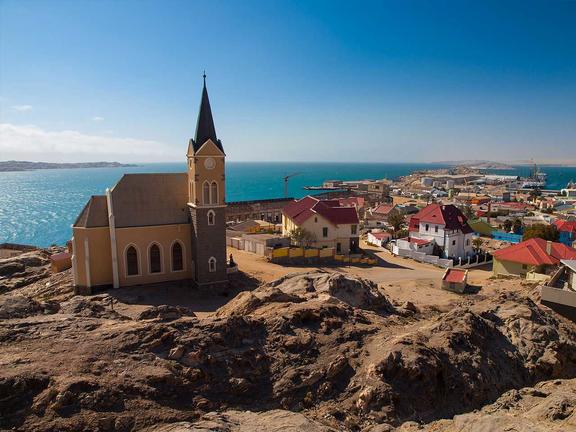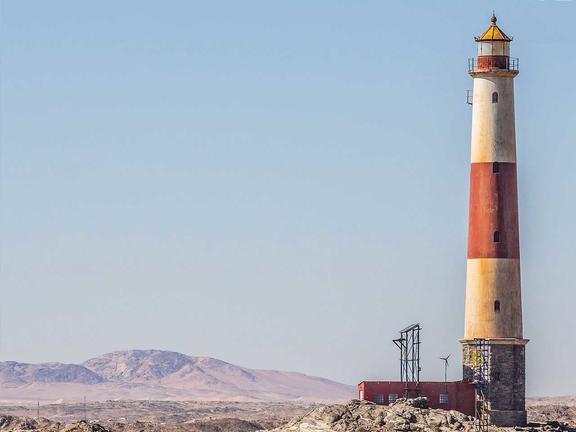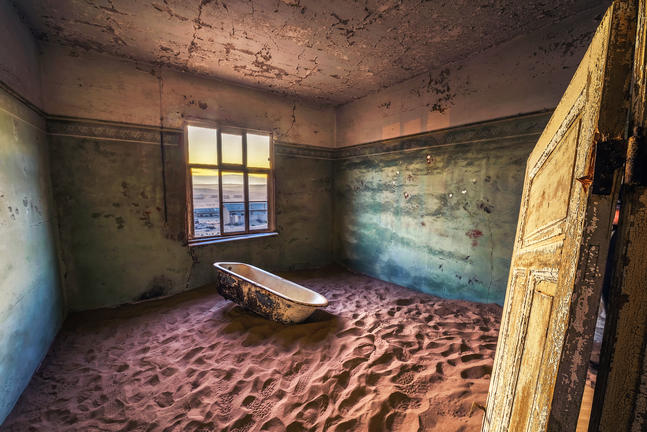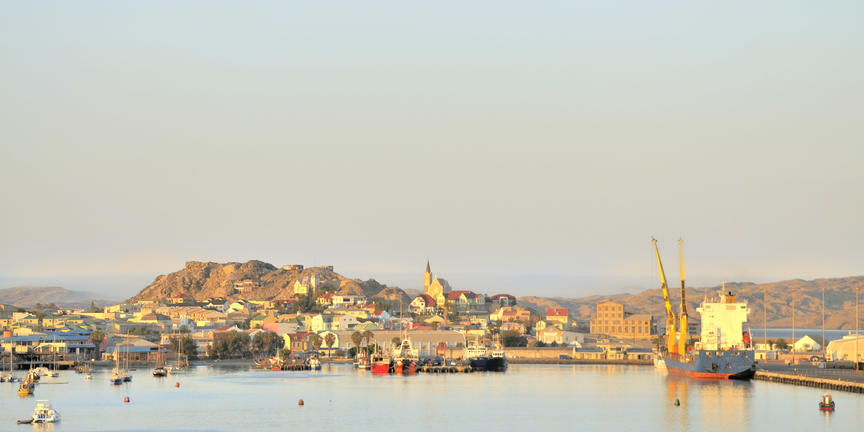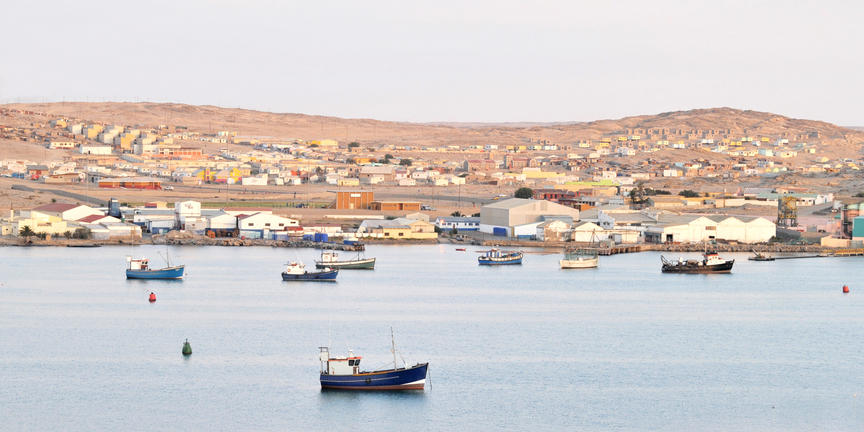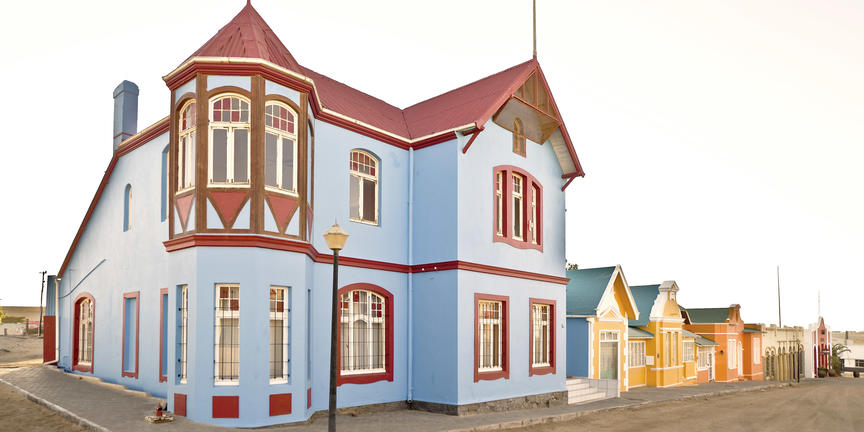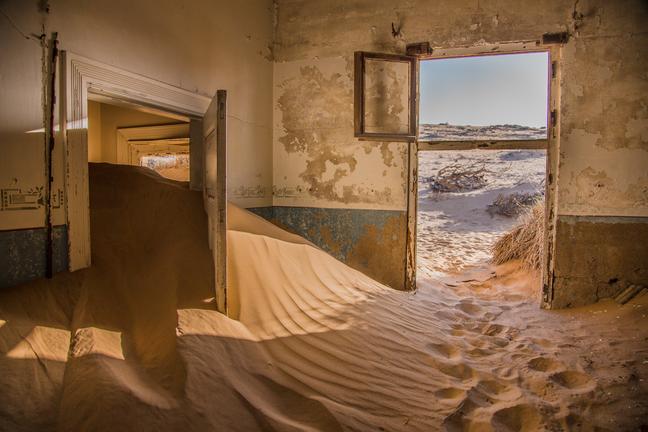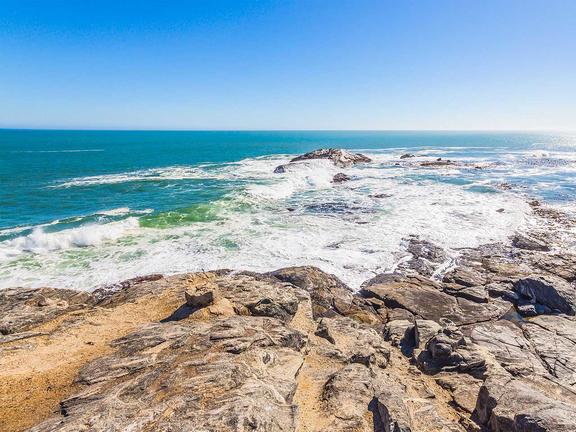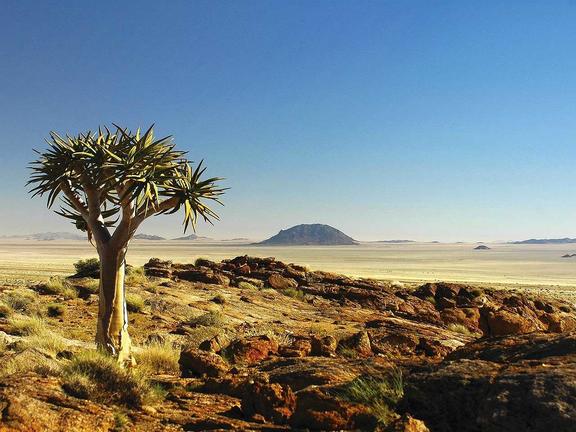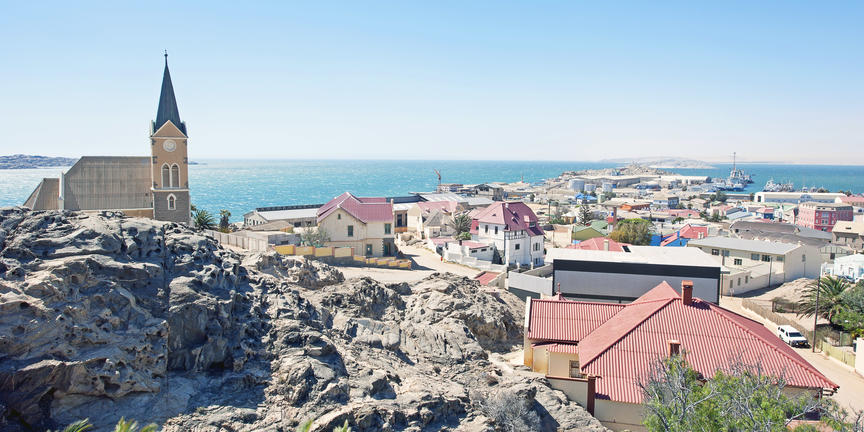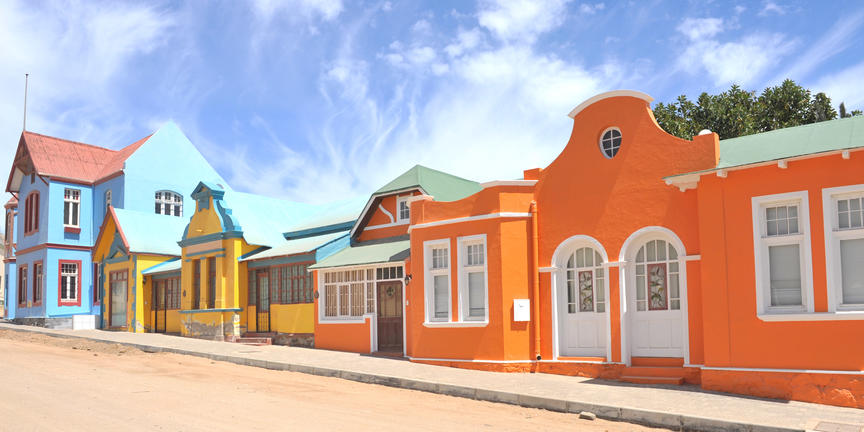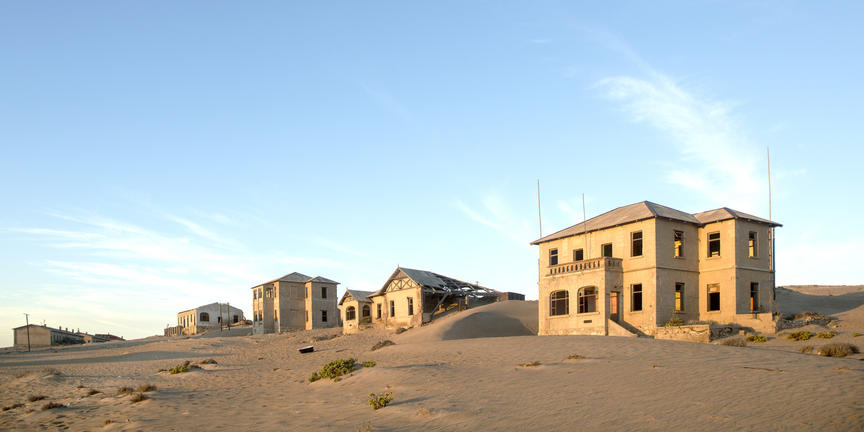The fascinating and the bizarre mix like sand and sea in this twisted land that requires a two-night visit if not more.
The region fell into German hands one year after a merchant named Adolf Lüderitz bought the bay and the coastline down to Orange River in 1883. The subsequent discovery of diamonds transformed this German enclave into a thriving port, which was promptly forgotten when richer bounty was discovered way down south in Oranjemund.
Lüderitz is an anachronism of 19th century Germany. Its older buildings have towers, turrets, oriel windows, bay windows, gables and steep roofs and the town is locked in a sleepy microcosm that defies modern notions of time.
Attractions in the town include Goerke Haus - a grand restored palace; Felsenkirche - a fine Victorian-Gothic church; the Lüderitz Museum, which has historical, ethnic, flora and fauna displays; Nautilus Hill on a clear afternoon for a taste of the desolation that surrounds the town; and the carpet factory, which is reviving demand for karakul wool.
Lüderitz Bay is dotted with islands and lined with rugged inlets. Daily boat cruises take you along the wild coastline with a good chance of encountering endemic Benguela dolphins, Cape fur seals and a rare breeding colony of African penguins. Birders should look out for Damara terns and greater flamingos.
The Lüderitz Peninsula is a scenic round trip with picnic spots and good photo-ops at Griffith Bay, Sturmvoglebucht, Diaz Point, Halifax Island, Essy Bay, Eberlanz Höhle, Kleiner Fjord and Grosse Bucht.
The ghost town of Kolmanskop is an eerie remnant of the diamond era at the beginning of the 20th century. This sand-filled skeleton of a town about 10km from Lüderitz was once a prospering community with a clubhouse, restaurant, bars, saloons, a concert hall and a free block of ice per household every day. You can buy diamonds here and join a guided tour for a detailed look at the history of the diamond boom.
The alluring Sperrgebiet, or forbidden zone, requires advanced booking, special permits and personal guides - all worth it. Agate Beach is about 5km north of Lüderitz and its black sand sparkles with mica and the occasional agate; Elizabeth Bay, 40km south of Lüderitz, had a 3 x 5km band of diamond-bearing coarse grits and sands; Bogenfels is a signature rock arch rising 55m above the sea and a day trip there goes by way of more ghost towns and abandoned diamond mines.
Leading out from Lüderitz, the road to Keetmanshoop is paved with a few attractions along the way, not least of which is the dramatic emptiness of the Koichab Pan.
Near Aus is the site of freak flower explosions after the erratic Cape-influenced winter rains. The timing and frequency is less predictable than the Namaqualand phenomenon in South Africa, making the experience all the more exciting. A similar phenomenon occurs in the lilyveld valley near Maltahöhe. The lilies are endemic to the valley and they bloom for about a week after good rains. February and March are the best times to catch this rare - and undiscovered - sight.
Another peculiarity inland of Lüderitz is the feral horses that have settled near the man-made waterhole at Garub Pan. Numbering about 150, these horses have adapted to the harsh conditions and roam at will across the Sperrgebiet.
Yet another oddity - and likely explanation as to the origin of the desert horses - is a sandstone fortress called Duwisib Castle. Complete with turrets, battlements, jacaranda trees and a lush lawn, this strange sight perches among the rugged hills as if it were dropped intact by a castle-bearing spaceship.
